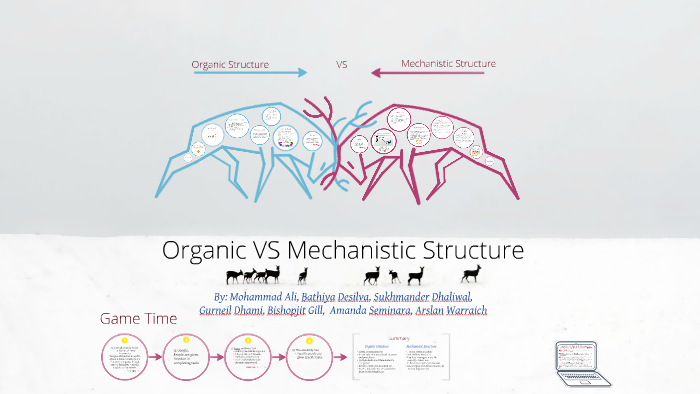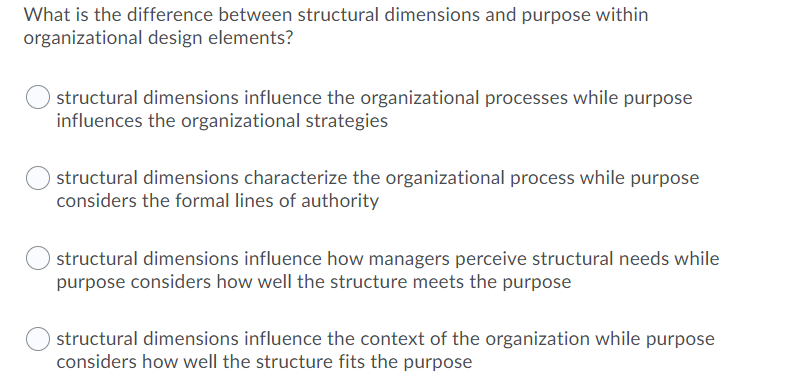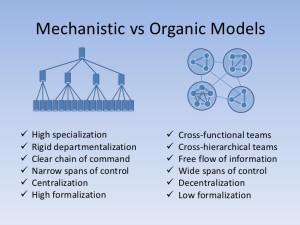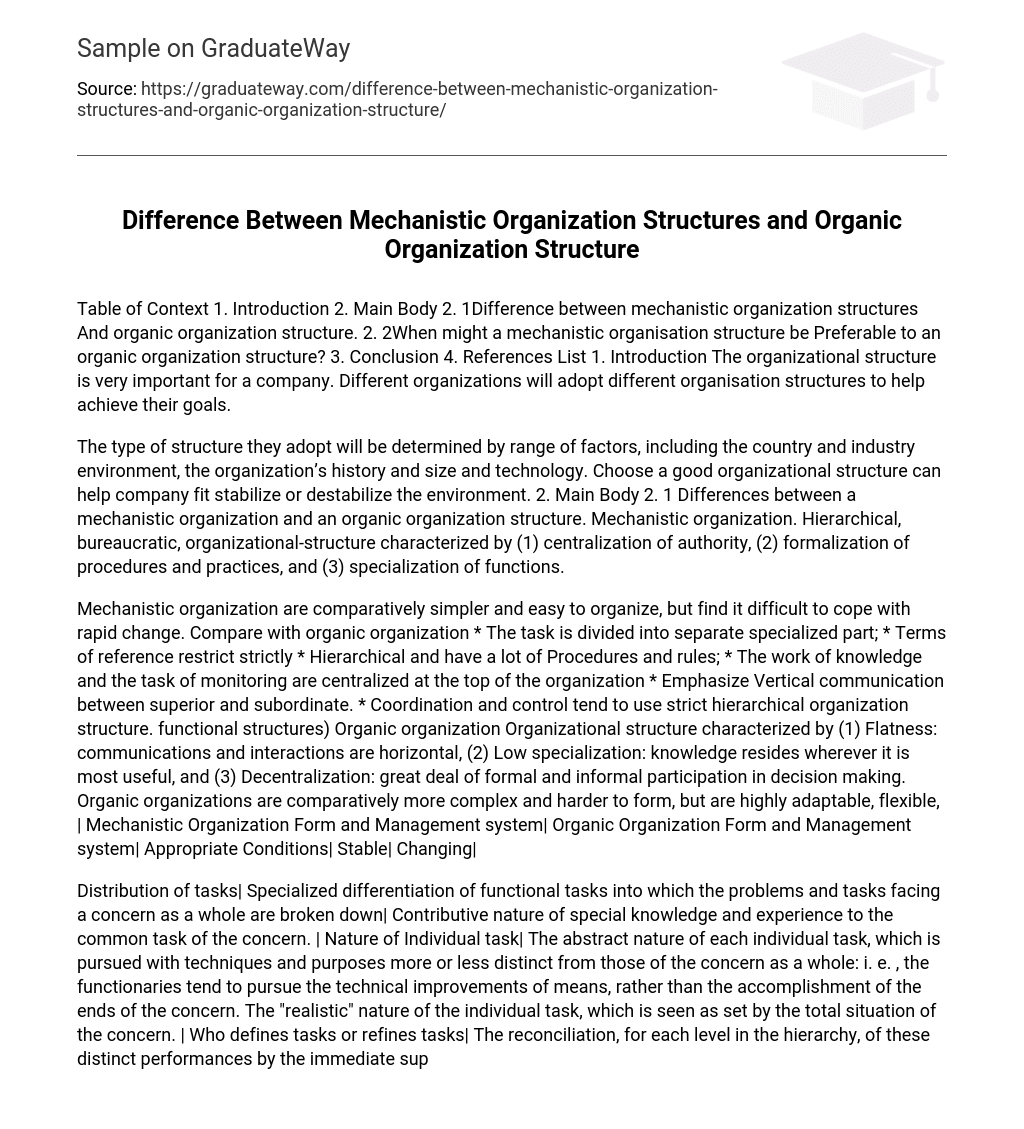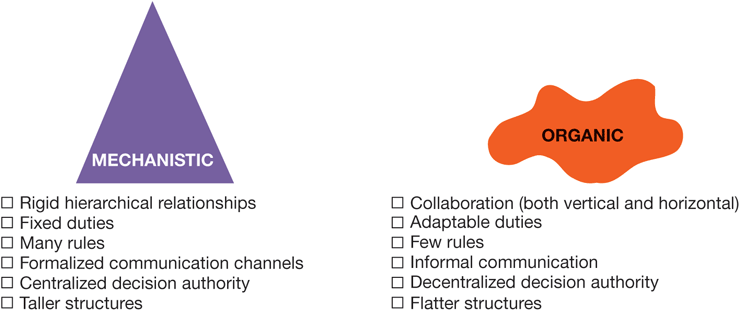Mechanistic structure and organic structure are two different ways that organizations can be structured. A mechanistic structure is characterized by a high degree of specialization, clear lines of authority, and strict rules and procedures. It is a top-down structure in which decisions are made at the top and then implemented by lower-level employees. This type of structure is often found in larger organizations, such as corporations, and is best suited for environments that are stable and predictable.
On the other hand, an organic structure is characterized by a high degree of flexibility, decentralization, and collaboration. In an organic structure, there are fewer rules and procedures, and decision-making is distributed throughout the organization. This type of structure is best suited for environments that are dynamic and uncertain, and is often found in smaller organizations or startups.
There are pros and cons to both mechanistic and organic structures. Mechanistic structures are generally more efficient, as they allow for a clear division of labor and a well-defined chain of command. They also tend to be more stable, as there is a clear hierarchy in place that can help to maintain order. However, mechanistic structures can be inflexible, as decisions are made at the top and it can be difficult to adapt to changes in the environment.
Organic structures, on the other hand, are more flexible and adaptable. They allow for a greater degree of collaboration and creativity, as employees are encouraged to contribute their ideas and expertise. This can be especially important in rapidly changing environments, where the ability to adapt quickly is key to success. However, organic structures can be less efficient than mechanistic structures, as there may be less specialization and fewer clear lines of authority.
Ultimately, the best structure for an organization will depend on its size, industry, and the nature of its environment. Larger organizations may benefit from a mechanistic structure, while smaller organizations may be better suited to an organic structure. It is also important for organizations to be able to adapt and change their structure as needed, in order to best meet the needs of their employees and customers.


